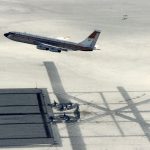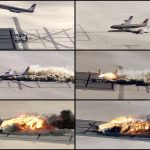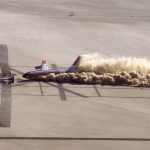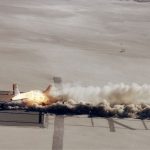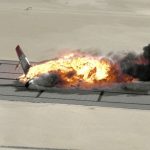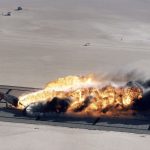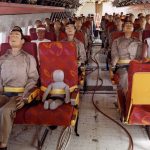Scientific crashing of jet


By Alex Q. Arbuckle From Mashable
Crashing and burning — for science!
On Dec. 1, 1984, scientists from NASA and the FAA took a passenger jet out to the desert and crashed it on purpose.
The Controlled Impact Demonstration was an experiment to test a new fuel additive which could potentially reduce catastrophic fuel fires in a crash scenario. The FM-9 additive had shown promise in simulated impacts, but a real test was necessary.
NASA obtained an aging Boeing 720 for the project and brought it out to Rogers Dry Lake at Edwards Air Force Base in California.
Crashing a jet was a rare opportunity. In addition to testing the fuel additive, scientists outfitted the cabin with an array of instruments for other survivability experiments, from new seat and luggage bin designs to fireproof materials.
After 14 preliminary test runs, the remotely-controlled jet took off for its final flight on the morning of Dec. 1, 1984, carrying 76,000 pounds of fuel.
Following a nine-minute flight, the remote pilot angled the jet toward its designated crash zone. The plan was to land level on the runway’s centerline and skid into a set of metal posts which would slice open the wings while leaving the fuselage intact.
As the jet descended below its “decision height” of 150 feet, it was slightly off target, but still had enough room to correct its course. Data recorders were switched on. The plane was committed to impact.
The left wing dropped and hit the lakebed first, causing the plane to swing left as it bellyflopped into the dust.
The plane plowed through the wing-cutting posts askew. One post sliced open the inboard engine on the right wing and then the fuselage, causing a massive fuel leak which immediately erupted into a spectacular fireball.
As the flames engulfed the doomed plane, it continued sliding forward and yawing left until it was nearly sideways. The mangled right wing buckled and folded over the plane as it skidded to a stop.
The blaze took over an hour to extinguish.
The experiment was a disappointment for proponents of the fuel additive, who nonetheless argued that the fire was smaller than it might have been. The FAA abandoned its efforts to order the use of the additive.
Investigators estimated that perhaps a quarter of the passengers could have survived, with passengers in the aft cabin having a window of about 30 seconds to escape the fire.
The experiments on cabin safety proved fruitful. Scientists gleaned rare data on survivability which ultimately helped the FAA set new safety standards, including fire-retardant seat cushions and improved floor lighting.
IMAGES:
Instrumented crash dummies in the plane’s cabin.
IMAGE: NASA
The plane passes over the crash zone and wing-cutting posts during a test approach.
IMAGE: NASA
The fireball engulfs the plane as it skids to a halt.
IMAGE: NASA
The plane slides through the wing-cutting posts and the number 3 engine ignites.
IMAGE: NASA
The right wing buckles and folds over as the fireball from the number 3 engine expands.
IMAGE: NASA
The plane’s left wing hits the ground first, turning the aircraft.
IMAGE: NASA
The plane turns sideways as it skids toward the wing-cutting posts.
IMAGE: NASA
For more on this story and video go to: https://mail.google.com/mail/u/0/?shva=1#search/colin+wilson/158b8024abc78ece

